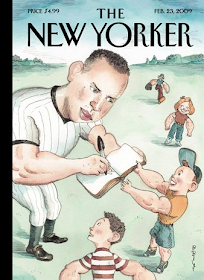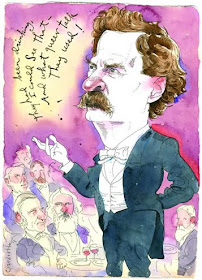
1953 illustration from Colliers about six greedy, shiftless sons waiting for their father to die.
These overalls alone are an act of utter brilliance:

Notice how sharply Dorne observed the folds at the knee and the waist, and how he used such a descriptive line to convey them. You can also tell from the way he drew those haunches that he understood perfectly the anatomy beneath the overalls.
Dorne's knowledge of anatomy did not hobble his imagination in any way. Look at the liberty he took in redesigning the human skull, placing ferret-like heads on the bodies of lummoxes.

In addition to the seemingly dislocated jaw, note the loving attention Dorne paid to the furrowed brow, the curve of the eye and the interaction between cheekbone and nose. This is a master draftsman at work.


Other examples of that fabulous Dorne line include:


But it would be a mistake to look at this drawing as just the sum of its highlights. Look at the total architecture of the drawing. Dorne has carefully placed these sons, leaning forward like vultures, to focus all attention on the dying old man.

Although he is the centerpiece of the drawing, you never see the old man's face. In a further act of stagecraft combining color and line, the old man's red sleeve draws your eye right where Dorne wanted it. (Admittedly, these watercolors have faded with the years, but even in 1953, that sleeve stood out).
For me, this is a lovely drawing with the kind of complexity that you rarely see in illustrations designed for today's shorter attention spans. The artist Leonard Starr recounts an exchange between Dorne and famed pop artist Andy Warhol: Warhol claimed, "Art today has to go beyond mere drawing" to which Dorne responded, "Excuse me, Andy, but there's nothing fucking 'mere' about drawing."
























